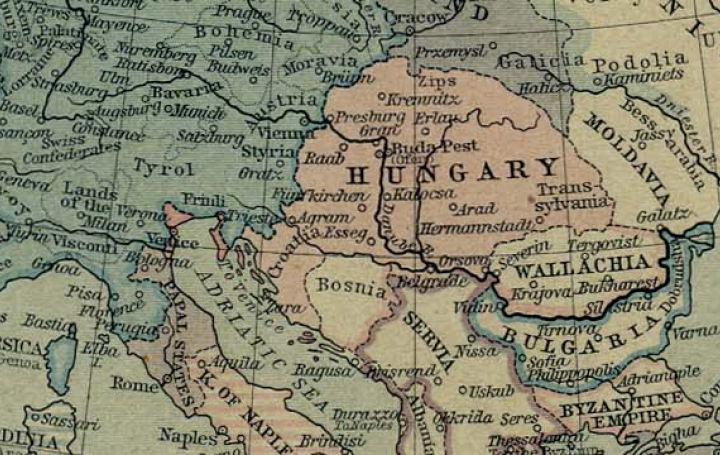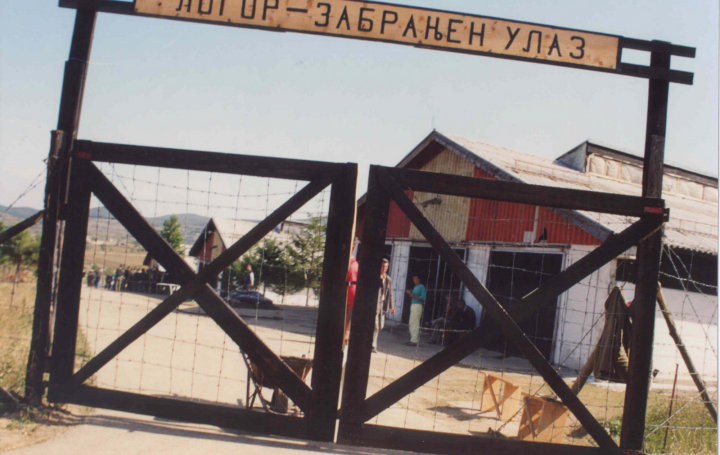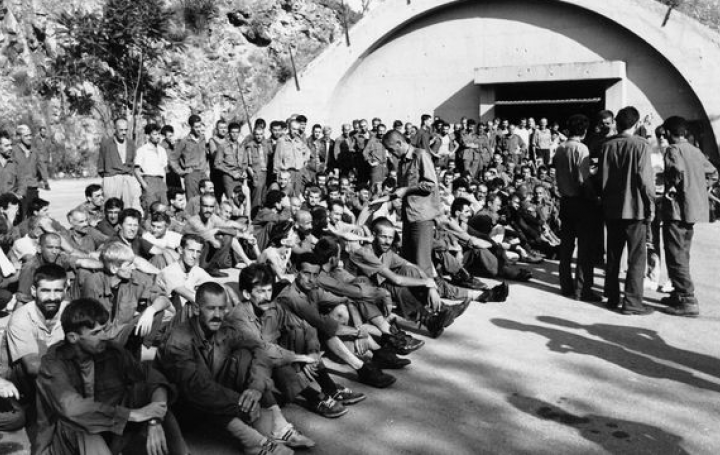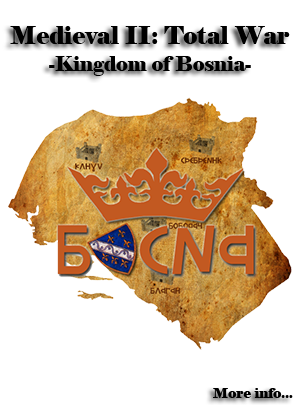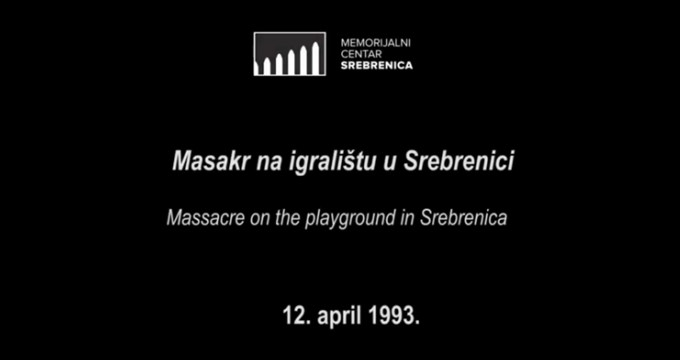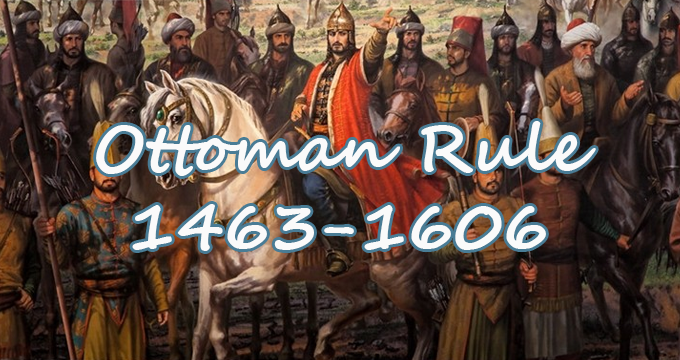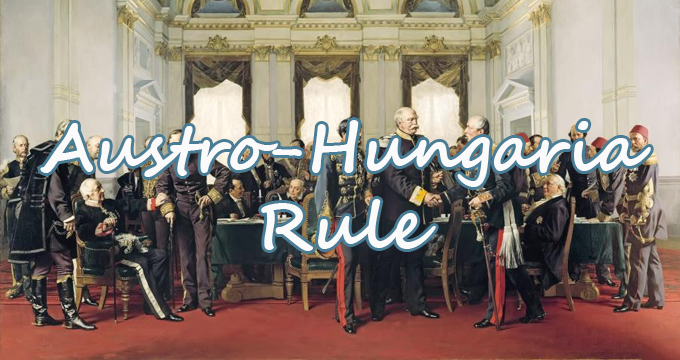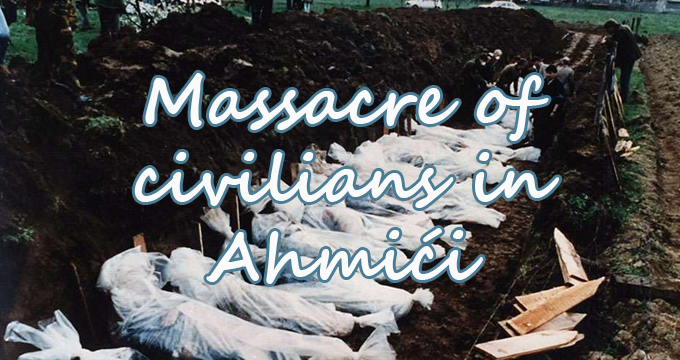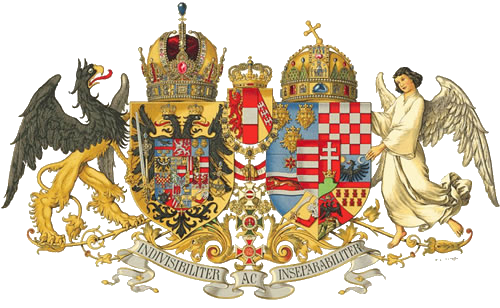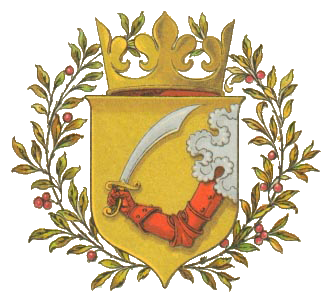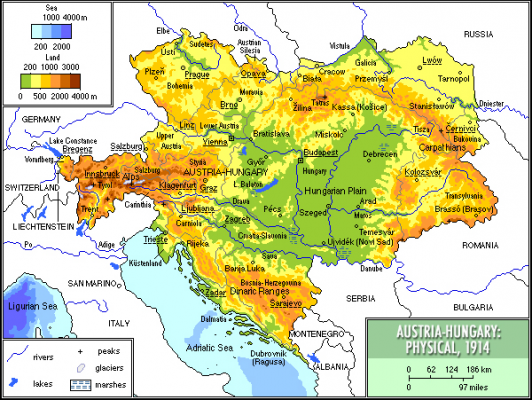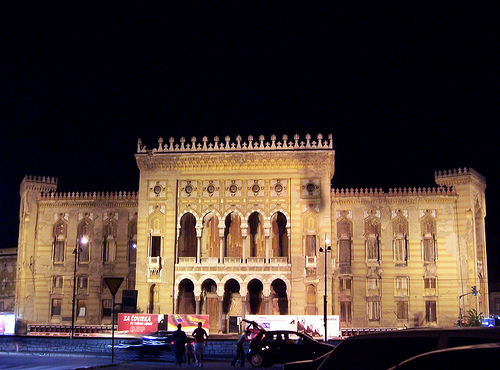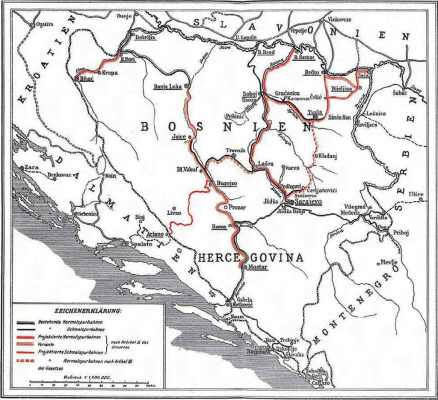Russia and the Habsburg monarchy had vied for political and economic influence in Southeastern Europe since the eighteenth century. Ottoman weakness, growing Russian influence in the area, and the realization that Serbia was becoming a formidable regional power led the Habsburgs to occupy (1878) and later annex (1908) Bosnia-Hercegovina. Under Habsburg rule, certain areas of education and industrial infrastructure improved.
However, the most significant characteristics of this period were the sharp decline of Bosniaks (Bosnian Muslims) in the region, the imposition of colonial rule, and the maintenance of feudal property relations. Instead of using the occupation period to implement reforms and extend rights that other peoples in the monarchy enjoyed (such as abolition of serfdom, creation of political parties, and an elected assembly) in order to build support for Habsburg rule, Vienna governed Bosnia as a colony and neglected its economic and political development. Despite achievements in certain areas of education and in building an industrial infrastructure, Austrian policies fueled anti Habsburg, nationalist politics in the region.
Austro Hungarian Coat of Arms
The 1875 rebellion and Habsburg occupation brought about the greatest demographic shift in Bosnia-Hercegovina since the massive Christian conversions to Islam in the sixteenth century. In contrast to that earlier, more gradual shift, the steep drop in the number of Muslims living in Bosnia during the Habsburg era (1878–1918) was the result of war, displacement, and ethnic cleansing. For the first time since the sixteenth century, the number of Bosniaks (Muslims) fell below the Serb (Orthodox Christian) population, which maintained its demographic plurality until 1945.The mortality rate from the 1875–1878 wars had been extremely high among both Serbs (Orthodox Christian) and Bosniaks (Muslims).
By 1879, the Bosnian Serb (Orthodox Christian) population had declined by 7 percent; the number of Bosnian Muslims (Bosniaks) had decreased by 35 percent. In 1870 Bosnian Muslims (Bosniaks) had comprised 48 percent (690,000) of a total population of 1.44 million. By 1879, the Bosnian Muslim population had fallen to 39 percent in a total population of 1.16 million (449,000). Between 1878 and 1918 another 100,000 Bosniaks (Muslims) emigrated. Despite pressure from the great powers, 200,000 Bosnian war refugees never returned home. At the same time, Habsburg policies encouraged Austrians, Hungarians, and western Slavs to immigrate to Bosnia-Hercegovina. In 1880, 4,500 Austrian and 12,000 Hungarian citizens lived in Bosnia. By 1910, these numbers had sky rocketed to 47,000 Austrians and 61,000 Hungarians.
A pattern of ethno-religious "cleansing" had been established in Southeastern Europe in the nineteenth century as part of the process of nation building. The results were even more dramatic in Bulgaria and Serbia than in Bosnia. Only half (700,000) of the pre-1878 Muslim population remained in Bulgaria in 1890. 216,000 had died from disease, starvation, or murder, and the balance had emigrated. Ethnic expulsions had accompanied Serbia's expansion since the 1820s. By 1888, only 17 percent of Serbia's pre-1820 Muslim population remained.
Austria-Hungary kept Bosnian regional (Sandžak) boundaries and placed its religious hierarchies under Habsburg supervision. The modest political gains of the late Tanzimat period were revoked. The advisory councils became defunct, and political dissent was criminalized. Politics degenerated to presenting petitions in person to the emperor, who could have the signatories arrested for anti-state activity. While Bosnia was reduced to politics by petition, Serbia became a parliamentary democracy. Even Habsburg Croatia benefited from its own assembly and modern political parties, which did not become legal in Bosnia until 1906.The Habsburgs permitted a Bosnian assembly, though still with no direct legislative power, only in 1910. Serfdom (abolished in the rest of the monarchy in 1848) continued. The land tenure and tax system that had set off the 1875 uprising remained unchanged.
Habsburg colonialism had to be imposed by military force. In contrast to the Ottoman reliance on local Bosnian forces, Austria-Hungary depended on vastly increased numbers of foreign troops and civilian officials to maintain control. In 1878, believing that Bosnians would welcome them as liberators, Austrian officials sent a telegram to inform the Bosnians of their impending occupation. Instead of embracing the army that rescued them from Ottoman rule, Bosnian newspapers warned of an Austrian invasion. Austrian troops crossing the border met with armed resistance from both Muslims and Serbs. Bosnian Serbs had opposed Ottoman rule, but did not favour replacing it with Austrian occupation. Ottoman army garrisons, charged with upholding the Berlin Treaty, mutinied and joined the resistance, but proved to be no match for Austria's forces. After fifty-three battles and nearly 1,000 Austrian deaths and another 4,000 casualties, Habsburg forces took possession of Bosnia-Hercegovina. In the first months of occupation,Austria-Hungary committed 268,000 troops to secure Bosnia-Hercegovina, one-quarter of its active military.
A new universal male conscription law sparked the second major rebellion of the Habsburg period. In November 1881 the government announced the unprecedented policy of a mandatory military draft. Both Christian and Muslim men had been subject to Ottoman military obligation since the mid-nineteenth century. Most Bosnians, however, fulfilled this duty by paying a tax in lieu of military service. In Hercegovina, 1,000 Christian and Muslim peasants and villagers revolted in January 1882, attacking army and police posts.The Austrian army easily crushed the revolt in March and executed its leaders. There were no more large rebellions, although peasant resistance through "banditry" continued until 1895.
Beginning in 1882, Bosnia-Herzegovina civil administration was under the common finance ministry in Vienna, thus avoiding the problem of assigning the region to either half of the Dual Monarchy. With the appointment of Benjamin Kállay as joint finance minister, the role of the civilian governor eclipsed that of the military governor. The civilian administration grew exponentially. Before 1878, the Ottomans had run Bosnia-Hercegovina with 120 officials; in 1908 the Habsburgs employed 9,533 officials to administer a slightly smaller area. The first step in imposing civilian rule on Bosnia was controlling the religious hierarchies that had played such a prominent role in the Ottoman government. Austria negotiated the right to appoint the Bosnian heads of the Orthodox, Catholic, and Muslim churches, established its authority to appoint and dismiss religious leaders, and then placed them on the state payroll. In 1880 the ecumenical patriarch in Istanbul gave the Habsburg emperor, Franz Joseph, the right to select Serbian Orthodox bishops in Bosnia, as well as the right to dismiss them for failure to fulfill either their state or religious duties. Moreover, Serbian Orthodox finances came under state control. In 1881 the pope agreed to allow the emperor to nominate (not appoint) Roman Catholic bishops in Bosnia and to require a loyalty oath from priests working in the region. In return, the Franciscans lost their status (enjoyed since 1342) as the only Roman Catholic order allowed in Bosnia.This loss of exclusivity enabled the Catholic Church to establish a secular clergy in Bosnia and increase Catholic influence. After 1881, there was a large influx of priests and nuns, who actively promoted Muslim conversions to Catholicism. The position of Islamic leaders was complicated because the Ottoman sultan was also the caliph, Islam's highest religious authority. Since Bosnia-Herzegovina technically remained part of the Ottoman state (the 1878 Treaty of Berlin having granted Vienna the authority to occupy and administer Bosnia-Herzegovina, while it remained legally a possession of Istanbul), the Habsburg government could not appoint the Bosnian mufti (the highest Muslim cleric in Bosnia) without violating international law. Instead,Vienna created the state salaried office of reis ululema to lead a new, independent Bosnian Islamic religious hierarchy, which included a four-man advisory committee (medžlis) to interpret and preside over shariat law (the Islamic equivalent of Catholic canon law). [1]
The two parties in the colonial relationship, Austria-Hungary and Bosnia-Herzegovina, each had socially and ethnically diverse populations that shared language, religious affiliation, nascent national consciousness, or some combination of these three traits, with inhabitants of the other polity. Three decades ago, Michael Hechter provocatively suggested that the concept of internal colonialism, developed principally by students of Latin American core-periphery relations, could be applied to Great Britain [3]. In advanced industrial societies, Hechter argued, development heightened social inequities and ethnic divisions rather than attenuated them. Our inquiry shows the same to be true of Bosnia-Herzegovina’s forty year colonial experience. Industrialization and urbanization rapidly advanced, but ethno-religious differentiation and inequality increased, as Hechter’s argument would have anticipated. Contention and contradictions rose, not only between colonizers and colony, but also among major actors within the colony, contributing to the ultimate demise of the Dual Monarchy itself. Austro-Hungarian administrators and journalists at the time recognized Bosnia-Herzegovina as a colony, and most historians who have since studied that era have also used that characterization. However, the meaning of ›colonialism‹ in the Bosnian context has rarely been systematically explored. In a summary of the various approaches to the scholarly study of colonialism, the American historian of Africa, Frederick Cooper, offers a comprehensive and nuanced description of the colonial phenomenon [4]. Elaborating and updating Balandier’s analysis, Cooper demonstrates that colonialism, more than just a repressive hegemony of one society over another, often produced consequences unintended by the colonizers, including unforeseen changes in the society of both the colony and the colonizing power. Using the categories of scholarly colonial studies proposed by Cooper in his recent work, I will argue in this essay that Bosnia’s colonial experience was more acute, and that antagonism between colonizer and colony intensified, because of the proximity and interconnectedness of the two polities. Bosnia-Herzegovina thus became a quintessential colony, subordinated to and profoundly dependent upon the parent, while imposing far-reaching and often unintended consequences on its colonial masters.
Bosnian Coat of Arms under Austro-Hungarian Rule
Modernisation
Austro-Hungarian administrators frequently voiced the hope that Bosnia-Herzegovina would become a contemporary European society [5]. Their policies, however, aimed only to append the outward manifestations of modernity to a traditional society. They saw themselves as missionaries of a cultural revival that would end the backwardness and particularism that they believed bedeviled Bosnia’s peoples. Benjamin von Kállay (1839-1903), the kaisertreue Joint Minister of Finance who headed the monarchy’s administration of Bosnia-Herzegovina from 1882 until his death, wrote to the emperor in 1895 that he expected a »new, modern spirit« to develop thanks to the »blessings of culture which the government seeks to spread through the land« [6]. But because he and other policy-makers were loath to unleash forces of social change that might disrupt their colonial mission, the monarchy’s administrators went to great lengths to preserve intact the social structure which they had found on their arrival in 1878.
Austro-Hungarian Empire 1914
The imperial bureaucrats were, in any case, far from being free agents operating in a vacuum. With potentially volatile areas of the monarchy to the north, south, and west of Bosnia- Herzegovina, officials had to consider the risks of unleashing a social upheaval that might spread to the parent-land. Furthermore, they encountered stiff resistance from Hungarian agrarians, who opposed the colonial venture from the beginning, and feared erosion of their social and political prominence. Political considerations within the monarchy reinforced the bureaucrats’ own conservative instincts. In fulfilling their expressed goals »to make the people content« and »retain the ancient traditions of the land vivified and purified by modern ideas«, [7] imperial administrators reinforced the traditional dominant elites and froze in place a social structure that proved deeply resistant to economic and political transformation.
Imperial administrators stood little chance of converting Bosnians into docile, grateful subjects unless they addressed the largest source of discontent in the province, the quasifeudal system of peasant obligations to landlords [8]. But the prospect of such reform aroused opposition from Hungarian landowners, and neither the emperor nor his minions could muster the political will to tackle the issue head-on. Instead, they codified and thoroughly regulated agrarian relations, eliminating many landlord abuses but also making the state an accomplice in the gathering of agrarian dues [9]. Only in the latter days of their rule did they offer a »voluntary« solution to peasants, who could purchase the land they worked by committing to future payments [10]. Peasants rebelled against these antiquated and inequitable agrarian relations in several uprisings in the early 20th century, and their plight became the cause célèbre of youthful Serb and Croat nationalists who turned so bitterly against the empire in the decade before the First World War [11].
On the other hand, imperial civil servants experienced some success in urbanizing their colony. They drew upon a small army of architects educated in Vienna, most of who were South Slavs or Czechs, to remake Bosnian city centers into European-style downtowns [12]. Architects benefited from metropolitan Vienna’s proximity to the colony, traveling freely from one to the other and fostering reciprocity of influences and designs. Bosnian urban centers came to look much like other provincial towns in the monarchy. Immigrants flocked to towns from the nearby countryside and from the monarchy proper, particularly from its Croat lands. Much new construction in these towns was lavishly devoted to conservative causes. Large, stately churches were built in even the smallest of towns. Adopting the pattern of city-builders in other regions of the monarchy, architects routinely adopted historicist models in designing new structures in Bosnia-Herzegovina. Architects deliberately designed monumental religious structures in the capital city of Sarajevo to enhance the stature of government-appointed religious functionaries, furthering the regime’s strategy of deflecting popular interest away from secular nationalist movements and toward personal piety and obedience [13]. Constrained by the hills that lined Sarajevo’s narrow east-west valley, architects and city planners were nonetheless able to replicate the visual sense of Vienna’s Ringstraße in all but its circular layout. Vienna-trained architects created a linear Ringstraße on a modest scale on the banks of the Miljacka River. They eagerly embraced the Secessionist style after the turn of the century, but Habsburg conservatism dictated that public and religious buildings should abjure the fad, and major structures continued to be built in historicist styles. Despite the conservative character of these Habsburg-sponsored changes, Austria-Hungary’s cultural mission had largely succeeded by the beginning of the 20th century.
National Library, Sarajevo - Bosnia and Herzegovina
But it was a Pyrrhic victory. The spread of ›modern‹ culture redounded to the detriment of the monarchies colonial hopes and aims. Better communications and accessible transportation eradicated the isolation in which many Bosnians had been trapped prior to the advent of roads, railways, and the telegraph, but the increased mobility and availability of information created possibilities for Bosnians to organize politically. From 1895 until the ruthless crackdown following the 1914 assassination of Franz Ferdinand, Austro-Hungarian administrators faced various forms of Bosnian discontent, which increasingly targeted imperial rule.
Four variants of protest developed during the Dual Monarchy’s rule. First, Serbian Orthodox and Muslim members of conservative social elites mobilized to seek greater autonomy for their respective educational and religious establishments [14]. (Catholic clergy, while not launching a protest movement, mobilized to encourage Orthodox and Muslim conversions to Catholicism, an initiative that shared some characteristics with the Serb and Muslim autonomy movements [15].) Second, middle class and elite Serbs and Croats joined national movements, became increasingly hostile to the regime, and developed progressively closer ties to similar movements in neighbouring lands. Third, the regime alternately ignored and repressed a workers’ movement that began in the middle of the first decade of the new century. Finally, and most dangerously to the monarchy, youthful nationalist activists formed secret societies and plotted the empire’s destruction. Some of them proved willing to carry out assassinations and to sacrifice their own lives while wreaking havoc on the monarchy’s ruling circles.
Leaders of all four types of movements quickly learned they could find sympathizers and safe haven in proximate territories, both within the monarchy and in neighbouring Serbia. Paradoxically, although not unique in colonial situations, dissidents in the colony were able to operate with impunity in the parent land and so avoid the colonizers’ strict regulations and close surveillance in the colony itself. Proximity provided Bosnian organizers with convenient access to the monarchy’s policy-makers and to instruments of public expression. Movement leaders benefited from allies within the monarchy, including lawyers who drafted their petitions, journalists who publicized their causes and parliamentary delegates who lodged complaints on their behalf. While cultivating and empowering traditional elites, the Habsburg authorities also encouraged a small faction of pro-reform Muslim intellectuals and landowners. Through their journal Bošnjak [The Bosnian] that began publication in 1891, these Muslims supported Kállay’s project to create a single multi-religious identity based on Bosnians’ common loyalty to the territory of Bosnia-Herzegovina [16]. Officials were delighted to see the leaders of this group endorse the reform of Islamic education to include scientific and secular subjects. The authorities held high hopes that Bošnjak would overcome the nascent Serbian Orthodox loyalty to the Serb national identity and the loyalty of Catholics to Croat national ideals. But the idea of a single Bosnian national identity never gained support beyond the small circle of youthful pro-regime Muslim intellectuals. To the dismay of imperial administrators, adherents of Serbian Orthodoxy in Bosnia-Herzegovina increasingly came to identify themselves as Serbs by nationality, and Catholics gradually adopted Croatian national identity. »Bosnians«, it turned out, would not settle for cosmetic cultural innovations; many instead adopted identities being promoted from neighbouring lands.
Reconditioning
At the heart of the Habsburg administrators’ approach to their colonial subjects was a pervasive paternalism. They stood in loco parentis and believed that inhabitants of Bosnia-Herzegovina could best be understood, motivated, and disciplined as children. Their attitude corresponded well with the spirit of absolutism that dominated in the first twenty years of occupation under Kállay, who devised the monarchy’s occupation strategy from 1882 until 1903. But notwithstanding Kállay’s profound imprint on the monarchy’s policies, paternalism preceded his arrival and continued after his death. Throughout Austro-Hungarian rule, the authorities that believed they bore the burden of imposing an inherently superior civilization on inherently inferior peoples, and neither geographic proximity nor shared ethnicity mitigated their purposeful condescension. As aptly noted by the anthropologist Joel Halpern, »Geographical proximity was accompanied by a sense of remoteness« [17].
The authorities’ instinctive paternalism was evident at the first official encounter between the imperial occupiers and their Bosnian subjects in August 1878. Field-Marshal Joseph Philippovich (1818-1889), commander of the conquering imperial force, received in audience the leaders of each major religious community in Sarajevo [18]. He asked Father Grga Martić, a Franciscan priest, to select the representatives of the other religious communities, and Philippovich insisted on meeting the leaders of the Jews, Serbian Orthodox, and Muslims separately from the Catholic leaders. After a courteous ceremonial opening, Philippovich scolded leaders of the Serbian Orthodox and Muslim communities, who had led resistance to the occupying Habsburg troops, and threatened them with retaliation if they continued to oppose the monarchy’s forces. Then, in a separate meeting, he met with Father Martić and bestowed warm praise upon him and his fellow Catholics for their loyalty to the new regime. Meanwhile, an aide to the Field-Marshal demanded – and received – from Muslim leaders the names of the ringleaders of the resistance in Sarajevo. The ringleaders were arrested and executed in the next few days [19]. While one would expect the victorious commander to be harsh with those who were killing and wounding his troops, Philippovich provided the first instance of an imperial official bestowing the supreme compliment – the authorities’ approval – upon Bosnia’s Catholics for their exemplary behavior.
The authorities reckoned that the reward of imperial favor would guide others in Bosnia-Herzegovina on the path to loyalty, obedience, and gratitude. In 1880, Kállay’s predecessor Baron von Szlávy wrote that the Habsburg administrators would appoint at the local level »personalities who will exercise influence on their co-religionists because of their integrity, education, irreproachable conduct, and social status« [20]. As a statement of colonialists’ intent, this is unremarkable. Similar words have no doubt been penned or spoken by European administrators of other colonies. More remarkable are the glaring omissions from these criteria: no particular skills, educational preparation, or even basic competence were required of appointees to the positions in question. With the exception of leaders of the religious hierarchies, local office-holders needed no administrative ability and did little real work. They were ciphers, elevated to prestigious positions in hopes that the respect they engendered would translate into the loyalty and quiescence of the communities which they led. Their days were filled with ceremonial appearances, courtesy visits to higher authorities, participation in delegations of appreciation, and other symbolic gestures of loyalty. They were compensated with salaries, but the more significant payoff for their public displays of loyalty came in the status associated with the positions to which they were appointed. Every town had its mayor, deputy mayors, town councilmen, and appropriate religious authorities carefully selected to reinforce loyalty and obedience to the regime.
Disloyalty, of course, evoked the opposite effect. Punishments, like rewards, were administered in the spirit of paternalism, undergirded by the assumption that a display of imperial disfavor would deter others from following the example of the miscreant. As a first step, the authorities often issued a public rebuke to an offender, sometimes accompanied by a nominal fine or suspension from duties for a few days. Such gestures did little to deter the offender, but in many instances they aroused resentment of the offender’s co-religionists. The malcontents cited these episodes in their quest to further incite popular resentment and added acts of petty repression to their growing litany of complaints against the regime. Occasionally the regime extended loans and concessions to its favored appointees in order to be able to retract them in the event the recipient misbehaved.
The real work of administering Bosnia-Herzegovina was done by bureaucrats imported from the monarchy. The colony’s proximity, and the overlap of groups between the colony and colonizing power, bestowed on the Dual Monarchy the great benefit of a large pool of educated bureaucrats who shared a common language with the colony’s subjects. The regime was able to maintain two parallel structures, the ceremonial hierarchy consisting of ›prominent‹ local appointees and the functional bureaucracy staffed by imports from the monarchy. Not until after the annexation of 1908 did Habsburg officials begin to move Bosnians into positions of administrative responsibility, and the process was still in its infancy when the First World War began. Functional officials from the monarchy were stationed in every town in the new colony, charged with heading the local bureaucracy and collecting detailed information about every leading citizen. Almost all of them spoke the local language. They cultivated informants, participated in meetings of voluntary associations, and scoured the area for signs of possible disruptive activities and potential political activism. Their reports were gathered, analyzed by officials in Sarajevo, and forwarded to the Joint Ministry of Finance in Vienna. Kállay excelled at this form of political surveillance: The archives are filled with reports that drew his attention and commentary, and some were even forwarded to the emperor for his review [21]. From the mid-1880s until Kállay’s death in 1903, Bosnians were among the most closely watched peoples on the face of the earth, their proclivities and activities known to officials from local civil servants to the emperor in Vienna. Imported civil servants carefully monitored the behavior of those appointed to ceremonial posts and acted as an internal affairs division to assure that local appointees were faithfully leading their constituents to loyalty and gratitude toward the monarchy. The paternalistic system of surveillance, petty incentives, and symbolic punishments gradually fell into disuse after Kállay’s death in 1903, but the regime’s paternalism continued to guide its responses to the student movements and secret organizations that arose in the early 20th century. The regime held a familiarly paternal approach: Education was a privilege, bestowed at the discretion of the regime upon promising youth in the expectation that they would return the favor with loyalty and gratitude. But proximity undermined the paternalistic premise that education was a reward for loyalty. Bosnians found higher education available at institutions in Belgrade, Vienna, and Zagreb. Habsburg administrators viewed institutions in each of these cities as fraught with influences hostile to Austria-Hungary’s colonial venture. They also faced local competitors in dispensing the privilege of education to Bosnian’s youth.
In the decade after 1900, the ethnonational cultural societies Napredak (Progress, for Croats), Prosvjeta (Enlightenment, for Serbs), and Gajret (Zeal, for Muslims) offered scholarships to promising students that competed with financial aid offered by the regime. Recipients of those stipends were not beholden to the government as officials hoped. The government prescribed in detail the behavior required of Bosnian pupils and students at all levels, but students only grew increasingly restive under the restrictions. Despite the regime’s best intentions, the Bosnian educational system produced more rebels than loyalists. Discontented students organized the most virulent anti-regime movements in the early 20th century and carried out assassinations against the Monarchy’s officials.
Economic Change
In becoming the monarchy’s sole colony, Bosnia-Herzegovina became the economic periphery to two rival »cores«, one dominated by the agrarian Hungarian elite and the other by the German liberals of Cisleithanian Austria. Those two dominant elites were constantly at odds. They had rival economic interests and national loyalties, and many groups in the monarchy became allies of one only to find themselves adversaries of the other. The rival elites each hoped to burden the emperor and the imperial regime with the task of advancing its preferred foreign policy as well as its domestic agenda. The imperial regime, of course, had an agenda of its own, and most day-to-day administration in Bosnia-Herzegovina fell to loyal bureaucrats who found that the internecine competition crippled their own efforts to govern. In the monarchy’s complex decision-making architecture, the Hungarian agrarians had the advantage of being able to obstruct most decisions. Many of them unsuccessfully opposed the occupation from the outset, but they succeeded in crafting legal constraints on the monarchy’s activities in Bosnia-Herzegovina [22].
Bosnia and Herzegovina railway map of 1913
Fatefully, the Hungarian obstructionists secured a guarantee that no funds from the monarchy’s coffers would be employed for projects in Bosnia-Herzegovina. The Bosnian historian Dževad Juzbašić has shown that this limitation drove imperial administrators to focus on developing extractive industries to generate revenues in the province. While the authorities may have turned principally to extractive industry in any case, Juzbašić rightly points out that fiscal constraints effectively eliminated the alternatives and led the new rulers to insist on state ownership of most major firms in the tobacco, lumbering, and iron ore industries [23]. The empire’s bureaucrats were hobbled in achieving most of their ambitious projects that might have reduced economic dependency. Economic rivalry between Hungary and Cisleithanian Austria for example profoundly influenced the building of railways in the colony. Administrators were forced to build only inexpensive narrow gauge railways along routes that transparently served rival Hungarian and Austrian economic interests rather than the rational economic interests of the province’s people [24].
The new administrators’ high hopes to provide universal elementary education, embodied in their proposal to build a network of schools throughout the province, went unrealized. This signal failure of Austria-Hungary’s colonial project meant that literacy rates rose little during the monarchy’s forty year rule. Since few Bosnians could read and write, many skilled laborers were imported from elsewhere in the monarchy to fill the relatively few industrial jobs created by economic development. Making up for the deficiency in government-sponsored schools, Muslim, Catholic, and Serbian Orthodox leaders expanded their respective parochial school systems, often with financing and teachers from neighbouring lands [25]. The parochial schools fostered nationalism and produced youthful malcontents, some of whom actively protested Habsburg policies or opposed Habsburg rule [26].
Bosnia-Herzegovina’s economic dependency deepened in the course of Austria-Hungary’s rule. With the exception of tobacco, most of its products were unfinished raw materials, while its population consumed imported manufactured goods. Most goods were produced in the Austrian half of the monarchy in the late 19th century, but entrepreneurs in the Hungarian lands began to industrialize and produce manufactured goods in the early 20th century [27]. Hungarian products competed with Austrian goods for the limited market in Bosnia-Herzegovina.
The prospect of rival Austrian and Hungarian salesmen promoting their wares was realized in 1909 when competing trade museums were established in Sarajevo to display manufactured goods for purchase by those Bosnians who could afford them [28]. The proximity of the colonizing land deepened Bosnia-Herzegovina’s dependency by prolonging and intensifying competition between the two economic elites.
References:
1. Hasburg rule in Bosnia-Hercegovina 1878-1918, by Katherine McCarthy; pp. 641-646
2. Balandier, Georges: La situation coloniale. Approche théorique. In: Cahiers Internationaux de Sociologie 11 (1951), pp. 44-79 [English transl. In Wallerstein, Immanuel (Ed.): Social Change. The Colonial Situation. New York: Wiley 1966, pp. 34-81].
3. Hechter, Michael: Internal Colonialism. The Celtic Fringe in British National Development, 1536-1966. Berkeley: California UP 1975.
4. Cooper, Frederick: Colonialism in Question. Theory, Knowledge, History. Berkeley: California UP 2005, pp. 33-55.
5. Kraljačić 1987, pp. 61-87.
6. Kállay to Emperor, Vienna, 03.10.1895. In: Hauptmann, Ferdo (Ed.): Borba Muslimana Bosne I Hercegovine za vjersku vakufskomearifsku autonomiju [Battle of the Muslims of Bosnia-Herzegovina for the Autonomy of Religious Endowments]. Sarajevo: Arhiv Socijalisticke Republike Bosne I Hercegovina 1967, p. 62.
7. Interview with Benjamin von Kállay. In: The Daily Chronicle [London], 03.10.1895. Press clipping in Papers of Benjamin Kállay, Fascicle 47, Magyar Országos Levéltár (Budapest), P344, cit. in Donia, Robert J.: Islam under the Double Eagle. The Muslims of Bosnia and Hercegovina,
1878-1914. Boulder/Coll.: East European Monographs 1981, p. 14.
8. Hauptmann, Ferdo: Privreda I društvo Bosne i Hercegovine u doba austro-ugarske vladavine (1878-
1918) [The Economy and Society of Bosnia-Herzegovina in the Period of Austro-Hungarian Rule]. In: Redžić, Enver (Ed.): Prilozi za istoriju Bosne i Hercegovine. Sarajevo: Akademija nauka i umjetnosti Bosne I Hercegovine 1987, vol. 2, pp. 99-181.
9. Kraljačić 1987, pp. 499-515; Donia 1981, pp. 25-28. On the administration of agrarian relations cf. K.u.k.
Gemeinsames Finanzministerium: Bericht über die Verwaltung Bosnien und der Hercegovina 1906. Vienna: k.k. Hof- und Staatsdruckerei 1906, pp. 53-39.
10. Hauptmann 1987, pp. 181-187.
11. The views of these nationalist student radicals are summarized in Dedijer, Vladimir: The Road to Sarajevo. New York: Simon & Schuster 1966, pp. 175-234.
12. Cf. the copious illustrations in Krzović, Ibrahim: Arhitektura Bosne i Hercegovine, 1878-1918 [The Architecture of Bosnia-Hercegovina, 1878-1918]. Sarajevo: Umjetnička galerija Bosne i Hercegovine 1987.
13. Cf. Donia, Robert J.: Sarajevo. A Biography. Ann Arbor: Michigan UP 2006, pp. 67-82.
14. Madžar, Božo: Pokret Srba Bosne i Hercegovine za vjerskoprosvjetnu samoupravu [The Movement of the Serbs of Bosnia-Herzegovina for Religious and Educational Autonomy]. Sarajevo: Veselin Masleša 1982, pp. 95-426; Šehić, Nusret: Autonomni pokret Muslimana za vrijeme austrougarske uprave u Bosni i Hercegovini [The Autonomy Movement of Muslims during Austro-Hungarian Administration in Bosnia Herzegovina]. Sarajevo: Svjetlost 1980, pp. 43-356; Donia 1981, pp. 37-174.
15. Grijak, Zoran: Politička djelatnost vrhbosanskog nadbiskupa Josipa Stadlera [The Political Activity of Vrhbosna Archbishop Josip Stadler].
Zagreb, Sarajevo: Hrvatski institut za povijest and Vrhbosanska nadbiskupija 2001, pp. 244-248.
16. Kraljačić 1987, pp. 214-278.
17. Halpern, Joel: Forward. In: Jezernik, Božidar: Wild Europe: The Balkans in the Gaze of Western Travellers. London: Saqi 2004, p. 17.
18. Kreševljaković, Hamdija: Sarajevo za vrijeme austrougarske uprave [Sarajevo in the Time of Austro-Hungarian Administration]. Sarajevo: Arhiv grada Sarajeva 1969, pp. 13-14. 19 Kreševljaković, Hamdija: Sarajevo u doba okupacije Bosne 1878 [Sarajevo in the Time of the Occupation of Bosnia in 1878]. In: Kreševljaković, Hamdija: Izabrana djela. Vol. 4. Sarajevo: Veselin Masleša 1991, p. 133.
20. Haus- , Hof-, und Staatsarchiv, Politische Abteilung, XL. 210, Szlávy to Dahlen, Vienna, 24.08.1880: »Persönlichkeiten welche vermöge ihrer Rechtlichkeit, ihrer Bildung, ihres unbescholtenen Lebenswandels und ihrer sozialen Stellung zunächst berufen schienen, auf ihre Glaubensgenossen einen Einfluss auszuüben.«
21. The scope of surveillance by local authorities is apparent in hundreds of documents assembled in Hauptmann 1967.
22. Juzbašić, Dževad: O nastanku paralelnog austrijskog i ugarskog zakona o upravljanju Bosnom I Hercegovinom iz 1880. godine [On the Origins of Parallel Austrian and Hungarian Laws on the Administration of Bosnia-Herzegovina from the Year 1880]. In: Juzbašić, Dževad: Politika i privreda u Bosni i Hercegovini pod Austrougarskom upravom [Politics and Economy in Bosnia-Herzegovina under Austro- Hungarian Administration]. Sarajevo: Akademija nauka i umjetnosti Bosne i Hercegovine 2002, pp. 11-48.
23. Juzbašić, Dževad: Neke karakteristike privrednog razvitka Bosne I Hercegovine u periodu od 1878. Do 1914. godine [Certain Characteristics of the Economic Development of Bosnia-Herzegovina in the Period from 1878 to 1914] and: O uključenju Bosne i Hercegovine u zajedničko austrougarsko carinsko područje [On the Inclusion of Bosnia-Herzegovina in the Common Austro-Hungarian Tariff Zone]. In: Juzbašić 2002, pp. 49-86 and pp. 141-153.
24. The standard work on the Dual monarchy’s competition over railway building is Juzbašić, Dževad: Izgradnja željeznica u Bosni i Hercegovini u svjetlu austrougarske politike od okupacije do kraja Kállayeve ere [The Building of Railways in Bosnia-Herzegovina in Light of Austro-Hungarian Policy from the Occupation to the End of the Kállay Era]. Sarajevo: Akademija nauka I umjetnosti Bosne i Hercegovine 1974.
25. Papić, Mitar: Hrvatsko školstvo u Bosni i Hercegovini do 1918. Godine [Croatian Schooling in Bosnia-Hercegovina until 1918]. Sarajevo: Veselin Masleša 1982, pp. 101-146; Papić, Mitar: Istorija srpskih škola u Bosni I Hercegovini [History of Serb Schools in Bosnia-Herzegovina]. Sarajevo: Veselin Masleša 1978, pp. 115-176.
26. On the protests in Mostar, cf. Donia, Robert J.: Mostar. Epicenter of Bosnian Student Movements on the Eve of World War I. In: Hercegovina 9 (1997), pp. 264-275.
27. Juzbašić, Dževad: Izvještaj Hermanna von Sautera o odnosima Bosne i Hercegovine i Monarhije u svjetlu austro-ugarskih ekonomskih suprotnosti [Report of Hermann von Sauter on Relations of Bosnia- Herzegovina and the Monarchy in Light of Austro-Hungarian Economic Contradictions]. In: Juzbašić 2002, pp. 112-120.
28. Ibid., p. 133.


